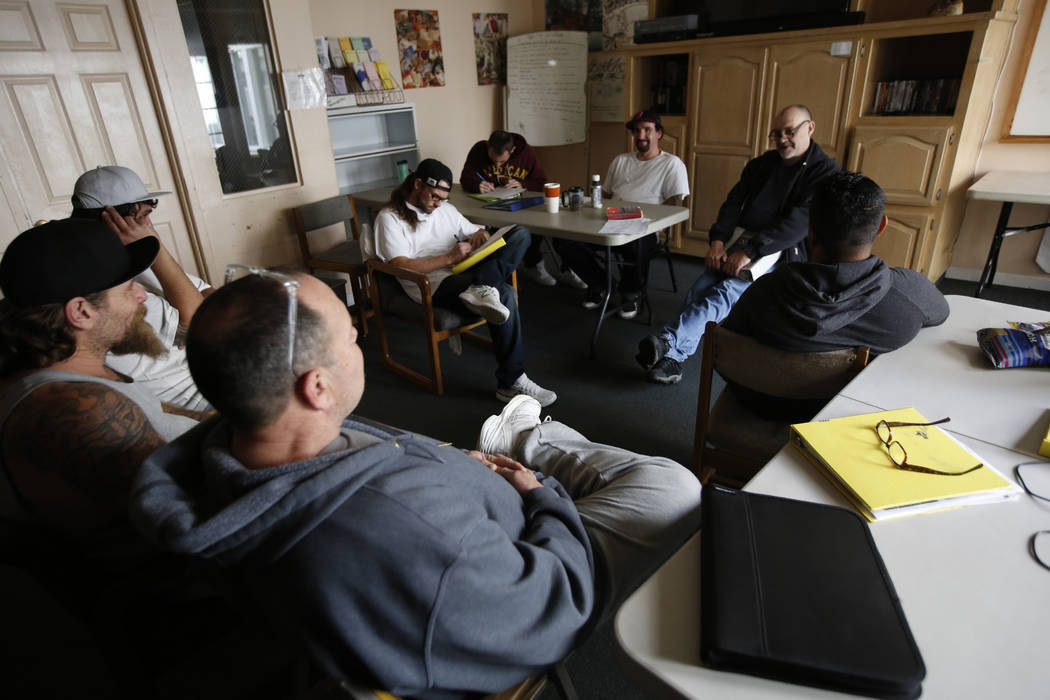Community programs for California inmates bring more escapes

SACRAMENTO, Calif. — California’s attempt to ease inmates back into the community is coming at a price: more prisoners, some with violent convictions, walking away before their time is up.
Fifty of the state’s more than 126,000 prisoners absconded last year, almost half of them from a program that allows male inmates to serve the final year of their sentences in community centers to get help with substance abuse, mental and other health issues, jobs, education, housing, family reunification and social support.
While most were quickly recaptured, that’s nearly double the number from 2014, the year before the “re-entry” initiative started.
Also, while the program excludes known gang members, sex offenders and those deemed at high risk of committing violence, others with violent histories are allowed.
An Associated Press review of the Corrections Department-run program, which has about 600 inmates, found some of last year’s 24 walkaways were serving time for weapons offenses, including an armed attempted carjacking and injuring a spouse. Convictions for others included robberies, false imprisonment with violence and extortion using force or threat.
The upswing in walkaways has victims’ advocates concerned and corrections officials trying to identify factors that may be prompting inmates to leave mere months before they are set to be paroled.
“Oh my gosh, that’s a lot,” Crime Victims Action Alliance executive director Christine Ward said of the overall number. “When you’re talking about second-degree robbery or felons who are desperate, what do desperate people do?”
California has nearly 40 supervisors and agents who search for walkaways and escapees along with their other duties that include managing prison gangs and conducting major criminal investigations. Corrections Department spokeswoman Terri Hardy said the state spends nearly $22 million annually on that Special Service Unit and several other units that together fall under the Office of Correctional Safety, but officials couldn’t break out the budget for catching fugitives.
The Corrections Department “takes the issue of walkaways very seriously,” said agency spokeswoman Vicky Waters, and reviewed the men’s re-entry program “to identify factors that may be leading participants to walk away from the program without authorization.”
That led to improvements intended to better help inmates reintegrate into society, she said. She wouldn’t give specifics, but said they include more focus on participants’ needs and the programs provided at re-entry centers.
So-called alternative custody programs serve a dual purpose, offering rehabilitation to inmates while helping state officials follow federal court orders to reduce overcrowding in prisons. Federal judges decided a decade ago that California’s prisons had become so crowded that it was preventing officials from providing inmates proper medical and mental health care.
Butte, Kern and San Diego counties each have a men’s re-entry center, while Los Angeles County has three.
Some centers have fences intended to make sure inmates and visitors properly check in and out, but they aren’t the sort of impenetrable barrier used at secure prisons, Waters said.
They have security staff, but inmates sometimes cut off their GPS-linked location monitors and disappear from the facilities or while on approved outside activities.
Just two female inmates in three years have ever walked away from their version of the program, which has centers in Bakersfield, Sacramento, San Diego, Santa Fe Springs and Stockton. Only one male inmate escaped from within a secure perimeter at a prison last year; he was captured the next day.
Ward and Crime Victims United of California founder Harriet Salarno fear corrections officials are being too lenient in who they let into the men’s re-entry program.
“They are letting the people out that shouldn’t be out,” Salarno said.
The programs can help reduce crime in the long run by preparing inmates for a productive role in the community, said Laura Dixon, spokeswoman for the Chief Probation Officers of California, though she agreed with the victims’ advocates that proper screening is vital.
She cited the Butte County facility that is jointly run with county probation officers, unlike some of the other men’s re-entry programs. Just 3% of graduates have committed new crimes, she said, while two inmates walked away due to mental health or family issues.
“There’s going to be a certain percentage of folks that won’t graduate the program or may walk away,” Dixon said. Yet the centers can “really reduce recidivism and give these people who are trying to re-enter our communities the support they need.”